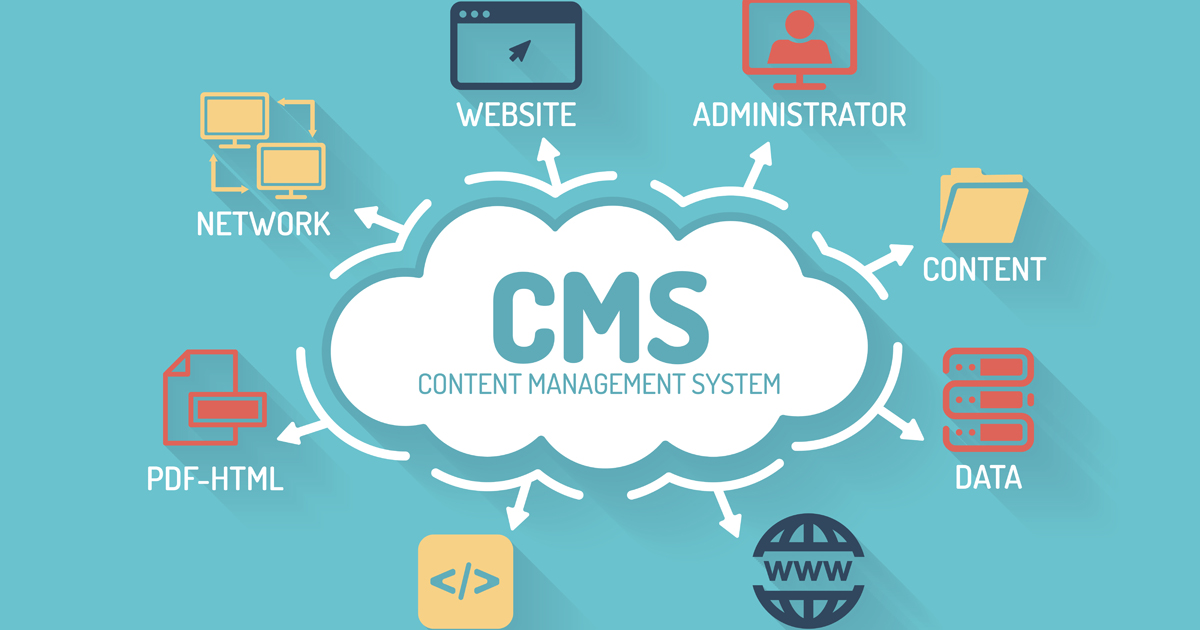What Content Management System (CMS) ?
If you have decided to enter the Internet world and launch a website, you have heard of the CMS’s content management system. If you are looking for a content management system or CMS, why should you use them, and what is the best content management system to build a site? Follow us to get the answers to all your questions.

What is a content management system or CMS?
Before introducing content management systems in site design, many people thought that they must know to code and have high technical knowledge in this field to build a site. Also another problem that made many people frustrated with having a website was the high cost of designing a website. But today, with the advent of content management systems or so-called CMS, people’s perceptions have gradually changed, and there is no such problem anymore.
Content management systems are software for creating and managing content. Contrary to popular belief, these applications are not necessarily web-based. Rather, web content management systems are just examples of CMSs installed on a server. These systems are software that users can use to manage the content of their sites. These CMSs made it possible for everyone to dream of having a site. For this reason, to build a site using these systems, various titles are used, such as building a site without coding or designing a website without technical knowledge.
In CMSs, users can easily have a dynamic site by entering a little information and a few simple clicks. The information in these systems is read from a database and then displayed to visitors. So easily, using a content management system can create sites according to your needs. The most important advantage of these systems is their flexibility and personalization according to the audience’s needs. WordPress, Joomla, Datalife, Drupal, Newk, and Prestashop are among the most common content management systems.
What are the features of the content management system?
Content management systems provide users with many possibilities. These features are provided by default in content management systems. Of course, many of them are added to the content management system by installing various plugins or plugins. There are different types of CMSs, and they are offered different capabilities from each other. Of course, some of these features, such as creating text posts, updating content, and so on, are common to all of them. Some of the features and capabilities of CMSs are:
- Create text, video, and video content
- Update published content
- Link building on the site
- Optimizing the site and its content for SEO purposes
- User management
- Connection to banking portals
- Create online stores
- Provide various reports from site statistics
- Personalize the features and appearance of the site
- Storage of site information
- Manage information sent by users and verify information
- Check and check the security of the site
Familiarity with different types of content management systems
There are many types of content management systems. Of course, we can generally divide them into two categories: shared systems and open source. In the continuation of this section, we will review and introduce each.
Open Source Content Management System:
Open source means that the program’s source code is available to the public, and there is no need to obtain a license or spend money to use that source code. This feature makes the original CMS source code easily available to users and developers worldwide, reviewed by them, and eventually upgraded.
Users and developers can make the changes they want to the sites when accessing the CMS source code. This feature is required when users want to customize or develop their content management system and sites. Content management systems Joomla, WordPress, and Drupal, are successful examples of these types of CMSs.
Shared Content Management System (SAAS):
Software As A Service, or SAAS, is called shared service systems and software. Content management systems, called SAAS, have the same capabilities as open-source systems. But the difference between them is in accessing the source code of the software or system.
In other words, the source code is not provided to users and programmers in this type of software. Also, to use these software, companies, licenses, licenses, or long-term subscriptions must be obtained from the companies providing those systems. One of the most popular content management systems is the Wix site, provided to users for free.
Why should we use a content management system?
So far, many content management systems have been introduced. Content management systems play an important role in the success of websites. Also, choosing the right CMS to enter the Internet world can bring a site closer to success quickly. But users are always hesitant to use CMSs. Because they do not know if these systems can meet their needs or not? To see if a content management system is right for us or not, we need to be sufficiently aware of its features, advantages, and disadvantages. So in this part of the article, we will introduce some of the benefits of CMSs.
- Easy site personalization
- No need for high technical knowledge
- Quick and easy setup
- Save on website maintenance costs
- Establish site security
- Continuous updates
- Possibility of having several authors
- Support Site
- And
Conclusion
If you are an idea creator, business owner, content creator, etc., having a good website can be a launching pad. If you want to build a site in the fastest time and with the least budget, a content management system can be one of the best ways to reach your goal. Because using CMSs, you can easily focus on content and site management and not worry about other technical issues. What is your opinion? Have you had experience working with content management systems?












